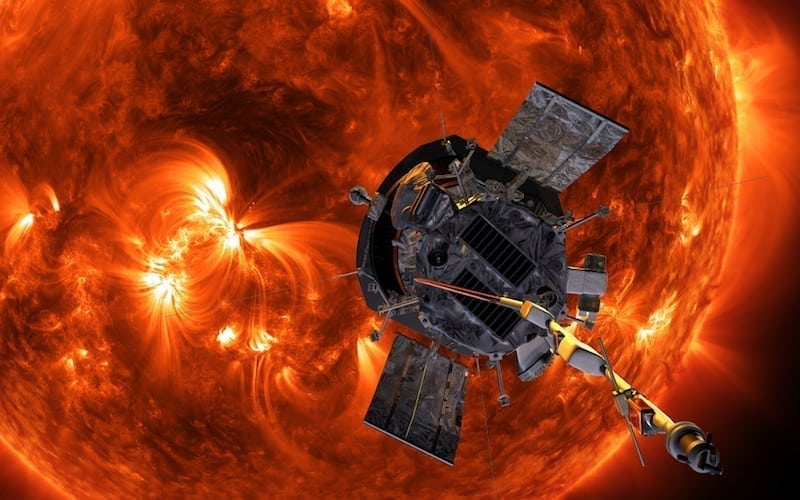NASA’s Parker Solar Probe (PSP) launched on Sunday, August 12th at 3:31 AM ET. The probe intends to come closer than an object has ever come to the Sun. Here’s everything you need to know about this remarkable mission.
Thermal Protection System
The Parker Solar Probe is intended to fly as close as 3.8 million miles from the surface of the Sun and looks to face extreme temperatures. The Thermal Protection System (TPS) is a hexagonal carbon heat shield that acts as the probe’s main source of protection from the Sun’s heat and radiation. When the probe is closest to the Sun, the TPS will endure temperatures up to 2,500 degrees Fahrenheit.
The heat shield is made from a 4.5-inch layer of carbon foam sandwiched between two thin carbon-carbon sheets. Carbon was used to construct the heat shield due to its ability to expel heat from its surface. However, since there is no air in space and heat needs a medium to travel through, the only way the heat energy can be expelled from the shield is via emitting photons and scattering light. Hence, a white coating is added to the top of the shield to help reflect heat and light.
The heat shield lies at the end of the probe and will be oriented to face the Sun at all times. There is a sensor extending slightly beyond the probe that can determine if the probe itself is going to be exposed to the Sun. This feedback is used to help correct the positioning of the probe so the TPS is facing the Sun at all times and rest of the probe is not exposed. There is also a bar that connects the TSP to the rest of the probe.
Purpose of the Parker Solar Probe
NASA has outlined three main objectives for the Parker Solar Probe. According to NASA , the probe’s mission is to “trace the flow of energy that heats and accelerates the solar corona [the Sun’s atmosphere] and solar wind, determine the structure and dynamics of the plasma and magnetic fields at the sources of the solar wind, and explore mechanisms that accelerate and transport energetic particles.” Not much is known about solar winds, the solar corona, or why they occur. Data from the probe could give insight into how these phenomena work. The data could also be used to counteract future natural disasters.
When coronal mass ejections are directed towards the Earth, they can cause a geomagnetic storm that may interfere with the Earth’s magnetosphere. For example, on March 9, 1989, a coronal mass ejection caused a severe geomagnetic storm, leading to power failures in Quebec, Canada. By studying the corona, more can be revealed about why these mass ejections interfere with magnetic fields and how to deal with them when they are directed at Earth.
The Probe’s Flight Path
According to NASA, the whole mission will take just under seven years. During this time, the probe will complete 24 orbits of the Sun, coming within 3.8 million miles of the Sun’s surface at its closest approach. To get so close to the Sun, the probe needs to be slowed down. This is achieved by flying near Venus and using the gravity of the planet to reduce the probe’s speed. The Parker Solar Probe will fly around the planet seven times. Each time the probe flies by Venus, it gets closer and closer to the Sun.
Written by Sneha Ojha










